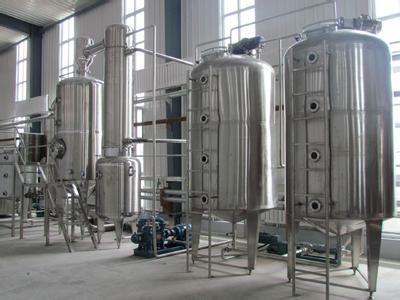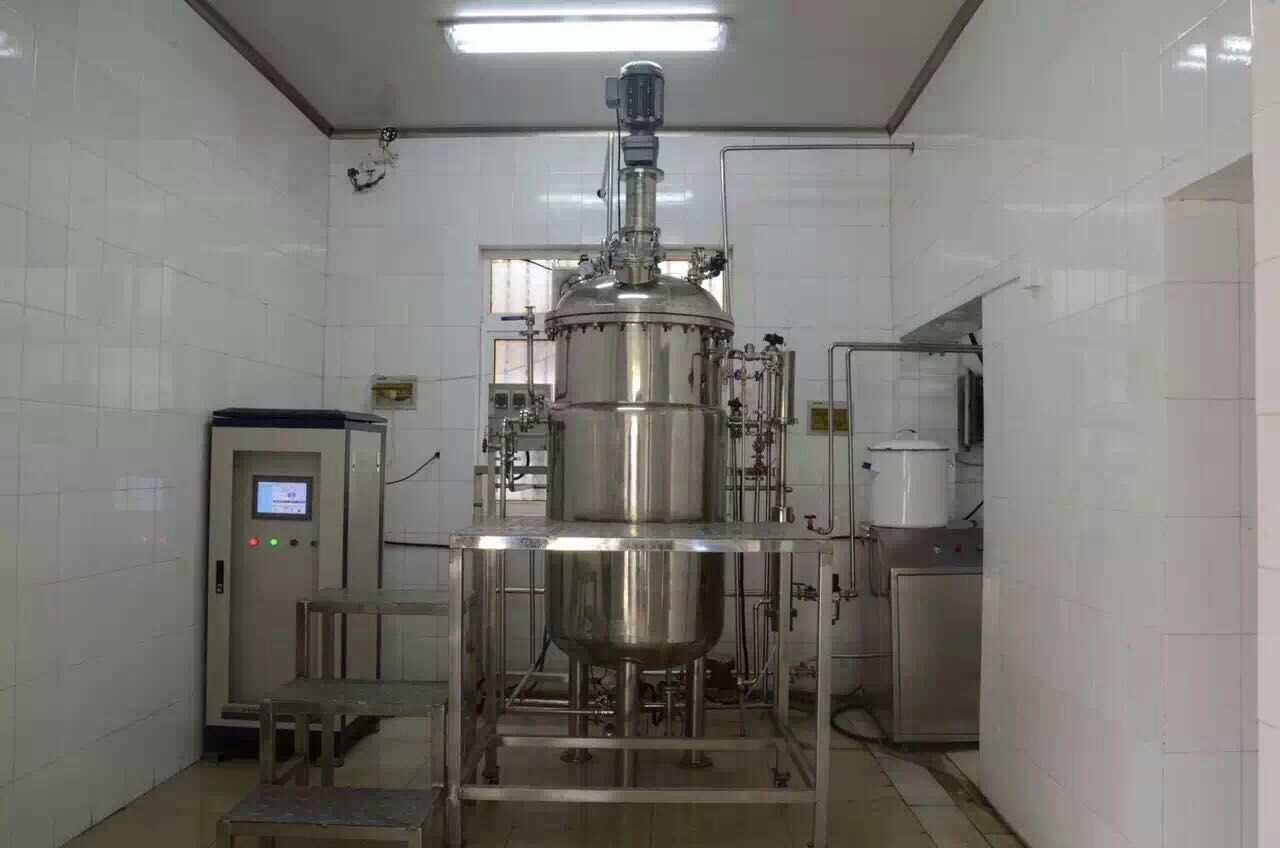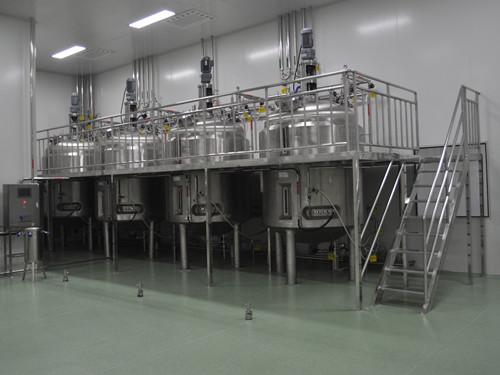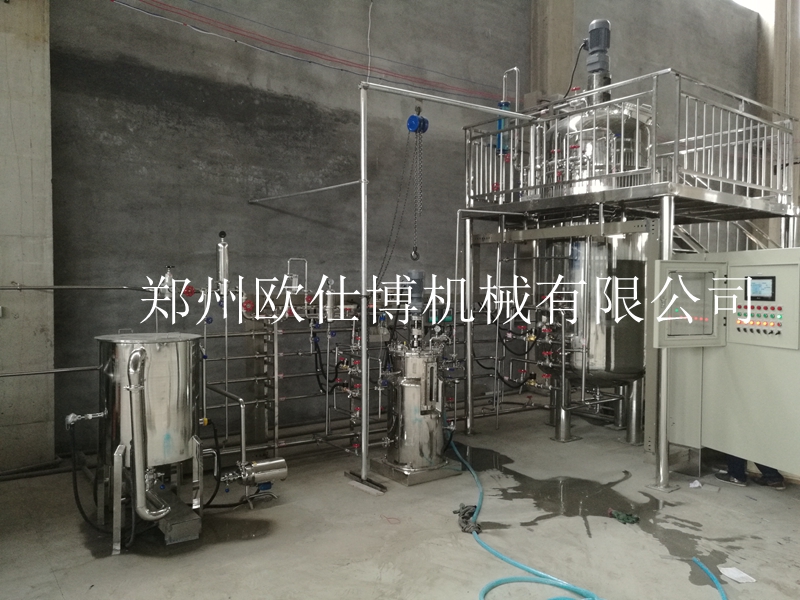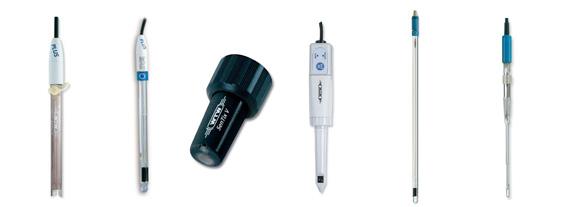Food lactic acid bacteria starter
The fermentation tank is a kind of equipment for mechanical stirring and fermentation of materials.
The device USES internal circulation method, dispersing and breaking bubbles with stirring paddle, it has high dissolved oxygen rate and good mixing effect.
The tank is imported stainless steel with SUS304 or 316L. The tank is equipped with automatic spray cleaning machine head to ensure the production process conforms to GMP requirements.
2 structural characteristics
1. Can CIP online cleaning, SIP sterilization (121 ° C / 0.1 MPa).
2. According to the requirements of hygiene, the structure design is very humanized and easy to operate.
The drive is stable and the noise is low.
3. Suitable diameter ratio design, according to need to customize the mixing device, energy saving, stirring, fermentation effect is good.
4. Surface mirror polishing treatment of inner tank body (roughness Ra is less than 0.4 & micro;
M);
The in and out of nozzle hole, sight glasses, manhole and tanks welds adopt stretch flanging process within the circular arc transition, smooth and easy to clean with no dead Angle, guarantee the reliability and stability of the production process, as to meet the requirements of "GMP" standard.
3 main components
Tank body: mainly used to cultivate various kinds of bacteria, and the seal is better.
There is a mixing paste in the tank, which is used for stirring during fermentation
A Sparger that is ventilated at the bottom to pass through the air or oxygen needed to grow the bacteria
Tank control sensor in particular, the most commonly used with pH electrode and DO electrodes, used to monitor the change of fermentation process of fermented liquid pH and DO controller, is used to display and control of fermentation conditions and so on.
4 usage method
1) calibration of pH electrode and dissolved oxygen electrode.
2) tank sterilization.
According to the need to medium into the tank, after sealed by the requirement, small fermentation tank (5 l) can be put tanks in large sterilization pot sterilization (115 ℃, 30 minutes);
A large fermentation tank (10 l and above) using steam sterilization (121 ℃, 30 min).
3) after the tank is cooled, place it on the fermentation platform and the installation is in good condition;
Open the cooling water, open the air pump power supply, connect the ventilation pipe to start ventilation, adjust the air inlet knob to make the air volume proper, and keep the tank pressure at 0.05 MPa;
The temperature, pH and stirring speed are set, and the slope of the dissolved oxygen electrode is determined at the determined speed and the volume of the air. The value is 100%
4) when the temperature is stable and all parameters are correct, the pre-shaken seed is connected, the fermentation time is started and the parameters are recorded.
5) after fermentation, wash the tank and electrode, insert the pH electrode into the triangle bottle with 3M potassium chloride, and the probe of the dissolved oxygen electrode is used to protect the sleeve and save the spare.
5 additional devices
* mixers (multi-stage or stepless variable). Sterile air vent (or aseptic positive pressure device)
* feed and discharge mouth. Sterile sampling port
* manhole. Cold, hot water in and out
Clean spray head with CIP
6 maintenance
1. If the inlet pipe and outlet pipe are leaking, the packing should be added or replaced when the screw tight joint does not solve the problem.
2. The pressure gauge and the relief valve should be inspected regularly. If there is any trouble, it should be replaced or fixed in time.
3. When cleaning the fermentation tank, use a soft brush for cleaning. Do not scrape with a hard brush to avoid damage to the surface of the fermentation tank.
4. The supporting instruments shall be checked once a year to ensure normal use.
5. Electrical equipment, instruments, sensors and other electrical equipment strictly prohibit direct contact with water and steam, and prevent dampness.
6. When the equipment is disused, it should be cleaned in time to discharge the water in the fermentation tank and the various pipelines.
Release the tank cover and hand hole screw to prevent the sealing ring from forming permanent deformation.
7. The operating platform, thermostatic water tank and other carbon steel equipment should be painted regularly (once a year) to prevent corrosion.
8. Check the gear oil level frequently, such as lubricating oil is insufficient, need to increase in time.
9. Replace the reducer lubricating oil regularly to extend its service life.
10. If the fermentation tank is not used for the time being, the fermentation tank shall be emptied and the water in the tank and in the pipeline shall be emptied.
7 precautions
1).
It is important to check the level of liquid level before the tank sterilization, and require that all electrodes are not below the liquid level.
2).
Be sure to check that the cooling water is opened before turning on the power supply. The temperature probe is in the slot or it will burn the heating circuit.
3).
In the process of fermentation, it is necessary to keep the worktable clean and clean the bottles and other items in time. The acid and lye or water that is splattered should be dried immediately.
4).
Be especially careful with the pH electrode and the expensive parts of the tank when installing, disassembling and sterilizing the tank.

